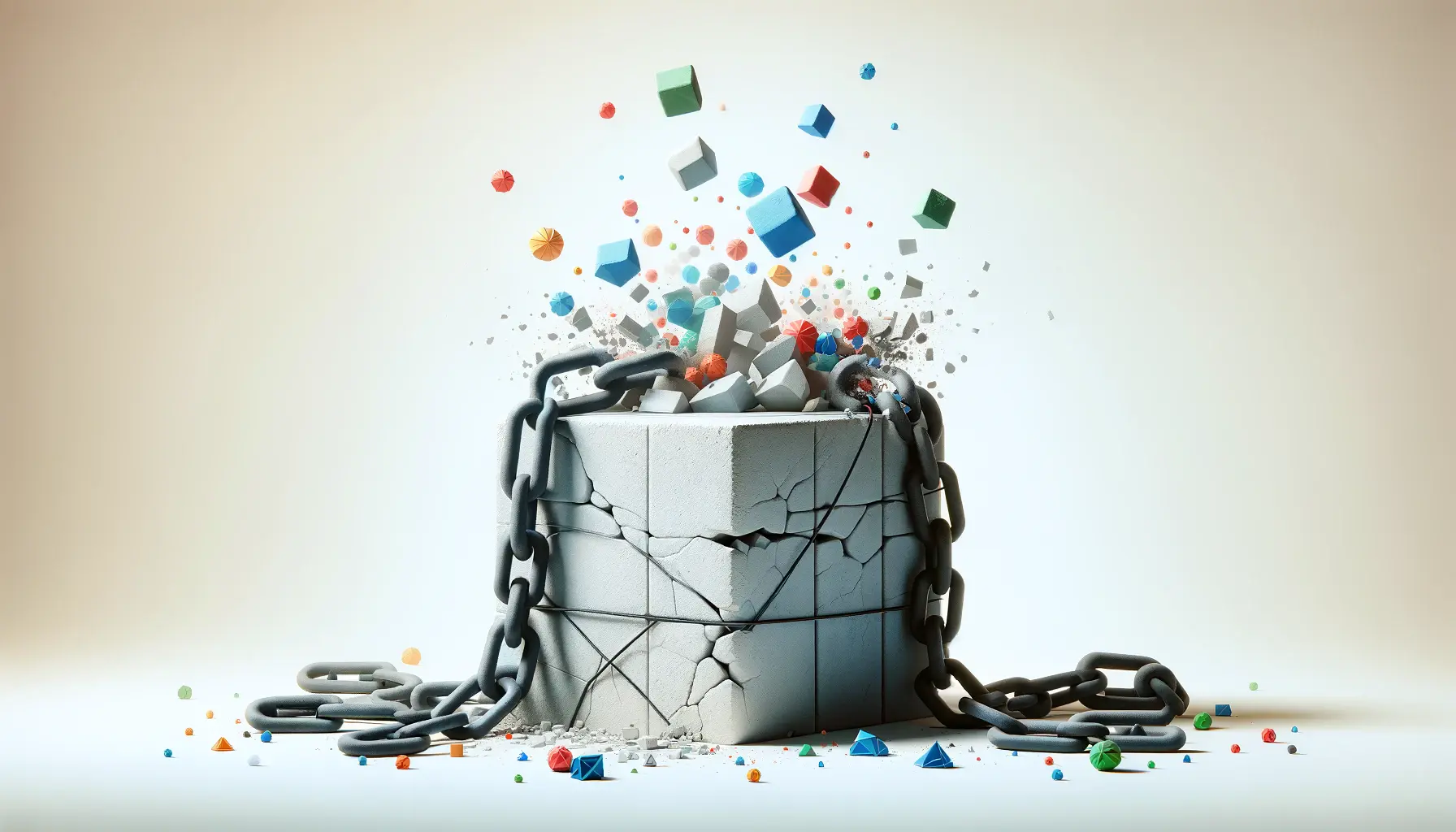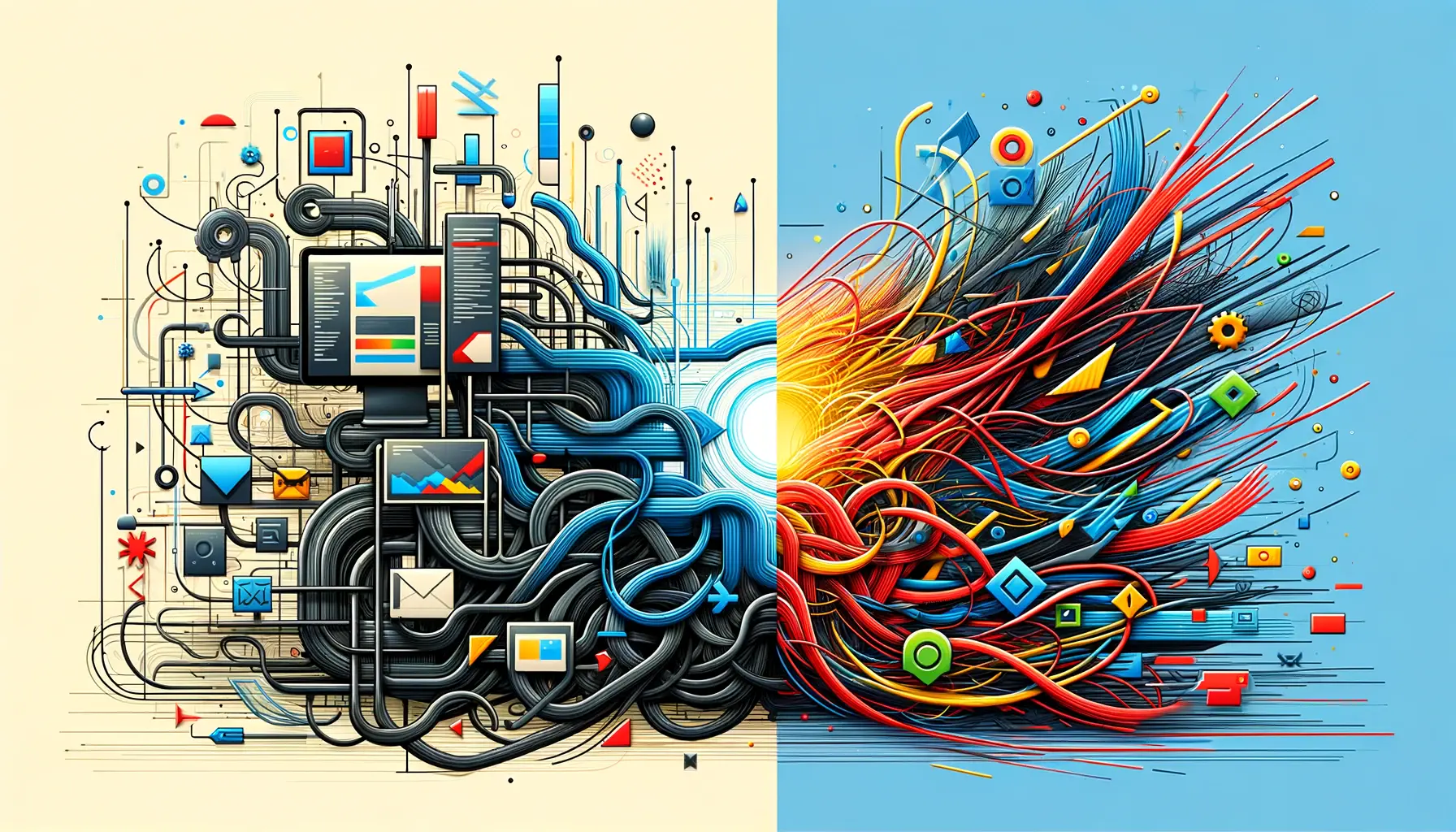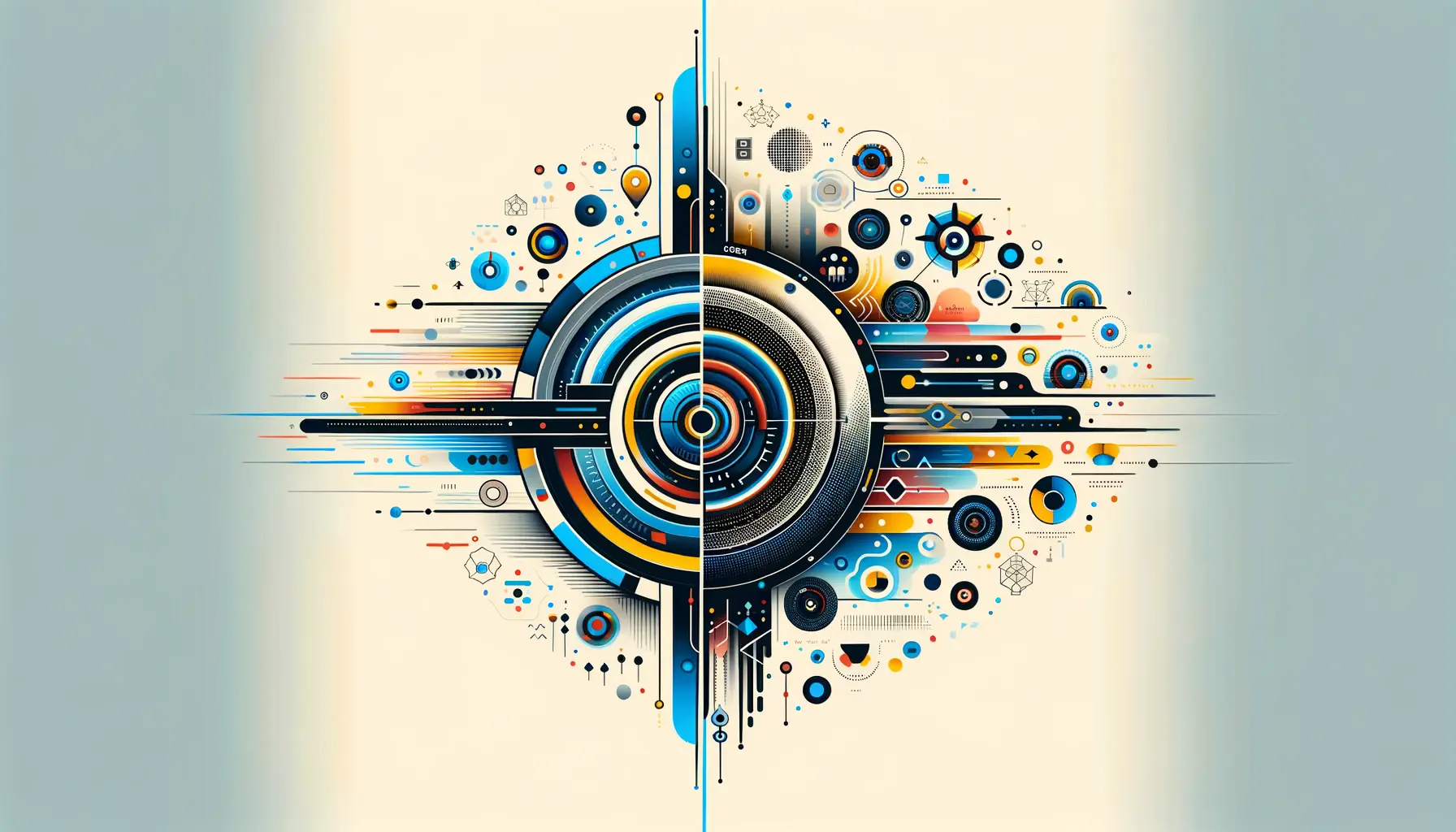The realm of artificial intelligence has taken a significant leap forward with the advent of OpenAI’s Sora, a groundbreaking tool designed to breathe life into the fabric of our imaginations.
Sora stands at the forefront of this innovative journey, offering creators, storytellers, and visionaries the unparalleled ability to transform textual descriptions into vivid, imaginative scenes.
This capability not only marks a pivotal moment in the evolution of content creation but also opens up a myriad of possibilities for exploring the depths of creativity without the traditional constraints of video production.
At the heart of Sora’s appeal is its ability to understand and interpret the essence of our ideas, translating them into dynamic visuals that capture the imagination.
Whether you’re a seasoned content creator looking to push the boundaries of your craft or a newcomer eager to explore the potential of AI-driven creativity, Sora offers a canvas limited only by the breadth of your imagination.
This article delves into the practical tips and tricks that can help you harness the full potential of Sora, ensuring that your creative visions are not just realized but brought to life in ways that captivate and inspire.
- Basics of Sora
- Exploring Creative Prompt Crafting
- Maximizing Visual Impact with Sora
- Integrating Storytelling Elements with Sora
- Optimizing Sora for Different Genres
- Leveraging Sora for Educational Content
- Future Directions for Sora in Creative Industries
- Embracing the Future with Sora: A Convergence of Creativity and Technology
- FAQs: Unleashing Creativity with Sora
Basics of Sora
What Makes Sora Unique
The inception of Sora by OpenAI represents a significant milestone in the field of artificial intelligence.
Unlike conventional video editing tools that require a detailed understanding of video production, Sora simplifies the creative process by enabling the generation of scenes through textual prompts.
This feature is not just a testament to the advancements in AI but also a gateway to democratizing video creation, making it accessible to a broader audience with diverse creative visions.
One of the key aspects that set Sora apart is its deep learning algorithms, which have been meticulously trained on a vast dataset of videos and textual descriptions.
This training allows Sora to understand the nuances of language and the visual elements that a text might imply, enabling it to generate scenes that are not only relevant but also rich in detail and imagination.
The technology behind Sora is designed to recognize and interpret a wide range of instructions, from simple scene settings to complex narratives involving multiple elements and characters.
Getting Started with Sora
Embarking on your journey with Sora begins with understanding its interface and how to effectively communicate your creative ideas through prompts.
The platform’s user-friendly design ensures that even those new to AI can navigate its features with ease.
Crafting a prompt involves describing the scene you envision in as much detail as possible, including the setting, characters, actions, and any specific elements you wish to include.
The richness of your description directly influences the quality and accuracy of the generated scene, making it crucial to be both clear and imaginative in your instructions.
Moreover, experimenting with different prompts and settings is key to unlocking Sora’s full potential.
This exploration not only helps you become more familiar with the tool’s capabilities but also inspires creativity, encouraging you to push the boundaries of what can be achieved.
As you refine your approach to creating prompts, you’ll discover the optimal ways to convey your ideas to Sora, resulting in scenes that more closely align with your original vision.
The essence of mastering Sora lies in the balance between clarity in your prompts and the freedom to let your imagination run wild. By understanding the basics and experimenting with its capabilities, you’re well on your way to creating captivating and imaginative scenes that bring your stories to life.
Exploring Creative Prompt Crafting
The art of crafting effective prompts for Sora is a critical skill that can significantly enhance the quality and impact of your generated scenes.
A well-constructed prompt not only guides Sora in visualizing the scene as you envision it but also leverages the AI’s capabilities to produce results that might surpass your expectations.
This section delves into strategies for developing prompts that resonate with Sora’s understanding, ensuring a fruitful collaboration between human creativity and artificial intelligence.
When initiating the process of prompt crafting, it’s essential to strike a balance between specificity and creativity.
This balance is crucial for communicating your vision while allowing room for Sora’s interpretative algorithms to add depth and detail to the scene.
Here are some key considerations and steps to take when crafting your prompts:
- Be Specific with Details: Include clear descriptions of the setting, characters, mood, and any specific actions or interactions. The more detailed your prompt, the more accurately Sora can visualize and create the scene.
- Embrace Creativity: While specificity is important, leaving some elements open to interpretation can lead to creative surprises. Experiment with varying levels of detail and see how Sora fills in the gaps.
- Use Descriptive Language: Engage with vivid and descriptive language to paint a picture for Sora. This includes sensory details, emotional tones, and dynamic actions.
- Iterate and Refine: Crafting the perfect prompt is often a process of trial and error. Don’t hesitate to refine and rephrase your prompts based on the outcomes, as this iterative process can lead to more effective communication and better results.
Examples of Effective Prompts
To illustrate the impact of well-crafted prompts, consider the difference between a basic prompt and one that’s been refined for clarity and creativity.
A basic prompt might say, “Create a scene with a cat sitting on a windowsill.” While this provides a clear image, it lacks the depth that could make the scene more engaging.
A refined prompt could be, “Visualize a serene evening with a fluffy, ginger cat lounging on the windowsill, gazing out at a bustling cityscape as the sun sets, casting a warm glow over the room.” This version invites Sora to generate a scene with richness in detail and atmosphere, showcasing the power of descriptive and imaginative language.
Understanding the nuances of prompt crafting is a journey of discovery, where each attempt brings you closer to mastering the art of communicating with Sora.
By focusing on specificity, embracing creativity, and being open to the process of iteration, you can unlock the full potential of Sora to create scenes that are not only imaginative but deeply resonant with your original vision.
Experimentation is key in discovering the unique ways Sora can interpret and visualize your prompts. Embrace the learning curve, and you’ll find your ability to craft compelling prompts growing with each attempt.
Maximizing Visual Impact with Sora
Creating visually stunning scenes with Sora goes beyond the initial prompt crafting.
It involves an understanding of visual storytelling principles and how they can be applied within the framework of Sora’s AI capabilities.
This section explores techniques to maximize the visual impact of your scenes, ensuring that each creation not only tells a story but does so in a visually compelling manner.
Visual storytelling is an art form that leverages images to convey a narrative, evoke emotions, and immerse the viewer in the experience.
With Sora, you have the unique opportunity to direct this visual narrative through text, guiding the AI to produce scenes that are rich in detail, composition, and emotion.
Here are some strategies to enhance the visual impact of your scenes:
- Focus on Composition: Consider the arrangement of elements within your scene. Use descriptive language to suggest the placement of objects, characters, and landscapes in a way that guides the viewer’s eye and emphasizes the focal points of your story.
- Play with Lighting and Color: Lighting and color are powerful tools in setting the mood and atmosphere of a scene. Describe the time of day, lighting conditions, and color schemes to help Sora create scenes that evoke the desired emotional response.
- Incorporate Dynamic Elements: Dynamic elements, such as moving objects or changing weather conditions, can add a layer of complexity and realism to your scenes. Mention these elements in your prompts to create more engaging and immersive visuals.
- Utilize Angles and Perspectives: The angle and perspective from which a scene is viewed can dramatically affect its impact. Experiment with different viewpoints, such as bird’s-eye view or close-ups, to discover unique ways to present your narrative.
Enhancing Emotional Depth
While technical aspects like composition and color play a crucial role in visual storytelling, the emotional depth of your scenes is what truly connects with viewers.
To achieve this, consider the emotional tone you wish to convey and use language that reflects these emotions.
Describing the expressions, body language, and interactions of characters can help Sora generate scenes that not only look beautiful but also resonate on an emotional level.
Remember, the goal is to use Sora as a tool to translate your imaginative visions into visual stories that captivate and engage.
By applying these visual storytelling techniques and focusing on the emotional depth of your scenes, you can leverage Sora’s capabilities to create works that are not just seen but felt, offering viewers a window into the worlds you’ve envisioned.
The key to maximizing visual impact with Sora lies in the details. Whether it’s the play of light and shadow, the emotion conveyed by a character’s gaze, or the dynamic tension in a scene, these elements, when described thoughtfully in your prompts, can transform your creations into powerful visual narratives.
Integrating Storytelling Elements with Sora
At the core of every memorable scene created with Sora is a story waiting to be told.
Storytelling is an essential component of engaging content, and when integrated effectively with Sora’s capabilities, it can elevate your scenes from mere visuals to narratives that speak volumes.
This part of the article focuses on how to weave storytelling elements into your prompts, ensuring that each scene you create with Sora not only captures the eye but also the imagination and emotions of your audience.
Storytelling with Sora requires a thoughtful approach to prompt crafting, where each element is considered for its narrative value and potential to contribute to the overall story.
Here are some strategies to incorporate storytelling elements into your Sora scenes:
- Establish a Clear Narrative: Begin with a clear idea of the story you want to tell. Whether it’s a moment of triumph, a tender interaction, or a dramatic conflict, having a narrative focus will guide your prompt crafting and ensure that the generated scenes contribute to the overarching story.
- Character Development: Characters are the heart of any story. Describe your characters in detail, including their personalities, motivations, and transformations. This will help Sora create scenes that not only introduce your characters but also show their growth and the role they play in the narrative.
- Setting and World-Building: The setting of your story provides context and adds depth to the narrative. Use your prompts to describe the world in which your story takes place, including any unique elements that make it interesting or relevant to the plot.
- Conflict and Resolution: Conflict drives the narrative forward and keeps the audience engaged. Include elements of conflict in your prompts, whether internal struggles, interpersonal dynamics, or external challenges, and hint at potential resolutions to create a sense of anticipation.
Crafting Scenes with Emotional Resonance
For a scene to truly resonate with viewers, it must evoke emotions.
This emotional connection is what transforms a beautifully rendered scene into a memorable story.
When crafting your prompts, consider the emotions you want to evoke—joy, sadness, suspense, or wonder—and use descriptive language that conveys these feelings.
Describe the emotional atmosphere of the scene, the characters’ emotional states, and any symbolic elements that might enhance the emotional impact.
Integrating storytelling elements with Sora’s visual capabilities offers a unique opportunity to tell your stories in new and compelling ways.
By focusing on narrative structure, character development, and emotional resonance, you can create scenes that are not just visually stunning but also rich in story and meaning.
This approach not only enhances the viewer’s experience but also showcases the potential of combining AI technology with human creativity to push the boundaries of storytelling.
True storytelling with Sora goes beyond visual aesthetics to touch the hearts and minds of the audience. It’s about creating scenes that are not only seen but also felt, remembered, and cherished.
Optimizing Sora for Different Genres
One of the most exciting aspects of working with Sora is its versatility across various genres.
From fantasy and science fiction to romance and horror, Sora’s ability to generate imaginative scenes tailored to specific genres opens up a world of creative possibilities.
This part of the article explores how to optimize Sora for different genres, ensuring that your scenes not only align with genre conventions but also stand out with unique creative touches.
To effectively utilize Sora across different genres, it’s crucial to understand the elements that define each genre and how they can be translated into visual scenes.
Here are some tips for tailoring your prompts to various genres:
- Fantasy: Emphasize magical elements, mythical creatures, and fantastical settings. Use descriptive language to paint vivid pictures of enchanting worlds that defy the ordinary, inviting Sora to bring these elements to life in your scenes.
- Science Fiction: Focus on futuristic technology, space exploration, and speculative concepts. Describe advanced gadgets, alien landscapes, and complex scientific ideas, guiding Sora to create scenes that capture the essence of the genre.
- Romance: Highlight emotional connections, intimate moments, and the beauty of relationships. Use prompts that convey the depth of feelings between characters, setting the stage for Sora to generate scenes that resonate with the warmth and complexity of romantic narratives.
- Horror: Create an atmosphere of suspense, fear, and mystery. Describe eerie settings, unsettling characters, and tense situations, allowing Sora to craft scenes that evoke the thrill and terror characteristic of the horror genre.
Adapting to Genre-Specific Narratives
Adapting your prompts to fit genre-specific narratives involves not just focusing on the thematic elements but also considering the narrative structures and tropes commonly associated with each genre.
For instance, in a mystery genre, you might focus on clues, suspects, and the unraveling of a mystery, using language that builds suspense and intrigue.
In contrast, for an action genre, emphasize dynamic movements, conflicts, and high-stakes situations to create visually compelling and adrenaline-pumping scenes.
Understanding the nuances of each genre and how to effectively communicate them through your prompts is key to leveraging Sora’s capabilities.
By doing so, you can create scenes that not only adhere to genre conventions but also offer fresh perspectives and innovative interpretations.
This genre-specific approach allows you to explore the full range of your creativity, pushing the boundaries of what can be achieved with AI-generated content.
Remember, the effectiveness of your scenes in conveying genre-specific narratives depends on your ability to blend traditional genre elements with your unique creative vision. This balance is what will make your scenes truly stand out.
Leveraging Sora for Educational Content
The potential of Sora extends beyond entertainment and creative storytelling; it also offers significant opportunities for enhancing educational content.
By generating imaginative scenes that illustrate complex concepts, historical events, or scientific phenomena, Sora can make learning more engaging and accessible.
This part of the article explores how to leverage Sora for educational purposes, focusing on strategies to create content that is not only informative but also captivating.
Creating educational content with Sora involves a thoughtful approach to prompt crafting, where the goal is to simplify complex ideas without sacrificing depth or accuracy.
Here are some tips for using Sora to enhance educational materials:
- Break Down Complex Concepts: Use Sora to visualize abstract or difficult concepts, making them easier to understand. Describe these concepts in simple terms and ask Sora to create scenes that represent them visually, aiding in comprehension.
- Historical Reenactments: Bring history to life by recreating significant events, cultural moments, or biographies of historical figures. Detailed prompts about the setting, characters, and context can help Sora generate scenes that offer a vivid glimpse into the past.
- Scientific Illustrations: Explain scientific theories, processes, or phenomena through visual scenes. Whether it’s the workings of the human body, the lifecycle of a star, or ecological interactions, Sora can help illustrate these concepts in a way that’s both accurate and engaging.
- Language Learning: Enhance language learning by creating scenes that depict conversations, cultural contexts, or vocabulary in use. Visual storytelling can be a powerful tool in helping learners grasp new languages by providing context and visual cues.
Customizing Content for Different Learning Styles
One of the advantages of using Sora for educational content is the ability to tailor materials to different learning styles.
Visual learners, for example, will benefit from the rich, detailed scenes that Sora can generate, while those who learn best through storytelling might appreciate narratives that incorporate educational themes.
By customizing your prompts to cater to these varied learning preferences, you can create educational content that is not only more effective but also more inclusive.
Moreover, incorporating interactive elements or challenges within your scenes can further enhance the learning experience.
Encourage viewers to explore the scenes, identify key elements, or answer questions based on the content.
This interactive approach not only reinforces learning but also makes the educational journey more engaging and enjoyable.
It’s a common misconception that AI-generated content cannot match the depth or quality of human-created educational materials. However, by leveraging Sora’s capabilities thoughtfully, you can create content that is both high in quality and rich in educational value, debunking this myth.
Future Directions for Sora in Creative Industries
The integration of Sora into the creative landscape marks just the beginning of a transformative journey for artists, educators, and content creators across various industries.
As we look to the future, the potential applications of Sora in enhancing creativity, storytelling, and learning are vast and varied.
This final section explores the prospective directions for Sora within the creative industries, highlighting the innovative possibilities that lie ahead.
As Sora continues to evolve, its capabilities will expand, opening new avenues for creative expression and content creation.
Here are some anticipated future directions for Sora in the creative industries:
- Enhanced Realism and Detail: Future iterations of Sora are expected to offer even greater levels of realism and detail in scene generation, allowing for more lifelike and immersive creations that can rival traditional media.
- Interactive Content Creation: Sora could enable the creation of interactive content where viewers can influence the narrative or explore scenes in a choose-your-own-adventure style, offering a more engaging and personalized experience.
- Collaborative Creative Processes: Sora may facilitate collaborative projects by allowing multiple creators to contribute prompts or modify scenes, fostering a new form of collaborative creativity that leverages the strengths of AI and human imagination.
- Accessibility and Inclusivity: By simplifying the content creation process, Sora has the potential to make creative expression more accessible to individuals without formal training in art or video production, promoting inclusivity within the creative industries.
Implications for Education and Training
Beyond entertainment and art, the implications of Sora for education and training are significant.
With the ability to generate detailed visual explanations and simulations, Sora could revolutionize the way educational content is created and delivered.
This could lead to more engaging and effective learning experiences, particularly in fields that rely heavily on visual aids, such as science, medicine, and history.
The future of Sora in the creative industries is not just about the advancement of technology but also about the new creative horizons it opens for individuals and communities around the world.
As Sora becomes more integrated into our creative and educational practices, it promises to enrich our cultural landscape, making the act of creation more accessible, inclusive, and boundless than ever before.
The journey of Sora within the creative industries is a testament to the power of combining human creativity with artificial intelligence. As we look forward, the possibilities are as limitless as our imagination, promising a future where AI not only enhances our creative capabilities but also redefines them.
Embracing the Future with Sora: A Convergence of Creativity and Technology
The journey through the capabilities, applications, and future possibilities of OpenAI’s Sora has unveiled a fascinating intersection of creativity and technology.
As we have explored, Sora is not just a tool for generating imaginative scenes; it is a gateway to a new era of creative expression, storytelling, and educational content.
The potential of Sora to revolutionize the way we conceive, visualize, and share our stories and ideas is immense, promising a future where the boundaries of creativity are continually expanded.
Unleashing Creative Potential
The exploration of Sora’s capabilities has demonstrated its power to unlock the creative potential within each of us.
By simplifying the process of scene creation, Sora enables individuals to bring their imaginative visions to life with unprecedented ease and flexibility.
Whether it’s crafting detailed narratives, visualizing complex concepts for educational purposes, or experimenting with different genres, Sora stands as a testament to the creative possibilities that emerge when human imagination collaborates with advanced AI technology.
Transforming Educational Narratives
Beyond its applications in entertainment and art, Sora’s role in transforming educational content has emerged as a pivotal area of impact.
By generating visually engaging and conceptually rich scenes, Sora has the potential to make learning more accessible, engaging, and effective.
This transformative capability underscores the importance of integrating imaginative technologies in educational strategies, ensuring that content is not only informative but also captivating to diverse learning styles.
Looking Ahead: The Evolution of Creative Expression
As we look to the future, the evolution of Sora promises to further blur the lines between technology and art, opening new avenues for creative expression and collaboration.
The continuous improvement of Sora’s algorithms and capabilities will likely introduce more nuanced and lifelike scenes, enhanced interactivity, and even greater accessibility.
This ongoing development signifies a future where the creation of imaginative content is democratized, allowing anyone with a story to tell or a concept to teach the ability to do so in visually stunning and impactful ways.
- The integration of Sora into collaborative projects, expanding the scope of collective creativity and innovation.
- The potential for Sora to contribute to more inclusive and accessible creative and educational practices, reaching a wider audience.
- The exciting possibilities for Sora to redefine the landscape of content creation, pushing the boundaries of what is possible in storytelling, art, and education.
In conclusion, the exploration of “Creating Imaginative Scenes with Sora: Tips and Tricks” has not only highlighted the capabilities of this innovative tool but also illuminated the path forward for creators, educators, and storytellers.
As we embrace the convergence of creativity and technology, Sora stands as a beacon of potential, guiding us towards a future where our imaginative and educational landscapes are enriched by the boundless possibilities of AI.
The journey with Sora is just beginning, and the horizon is replete with opportunities for those ready to explore the depths of their creativity.
FAQs: Unleashing Creativity with Sora
Explore the most common inquiries about creating imaginative scenes with Sora, OpenAI’s innovative AI model.
Sora is an AI model by OpenAI that generates realistic and imaginative scenes from text instructions, using advanced algorithms to interpret and visualize creative prompts.
Currently, access to Sora is limited, focusing on developers and creators through OpenAI’s platform, with plans for broader accessibility in the future.
Sora can generate a wide range of scenes, from realistic depictions to fantastical landscapes, based on the specificity and creativity of the input prompts.
The more detailed your prompt, the more accurately Sora can visualize and create the scene. Specificity combined with creative flair yields the best results.
Sora is capable of generating videos up to a minute long, focusing on quality and complexity within this timeframe to ensure imaginative and impactful scenes.
Usage rights for Sora’s generated scenes depend on OpenAI’s licensing terms, which typically require a separate agreement for commercial use.
Sora interprets and visualizes complex narratives by analyzing the details within prompts, translating them into scenes with dynamic elements and emotional depth.
Future enhancements for Sora may include increased realism, longer video generation capabilities, and more intuitive interaction with prompts for even richer scene creation.













